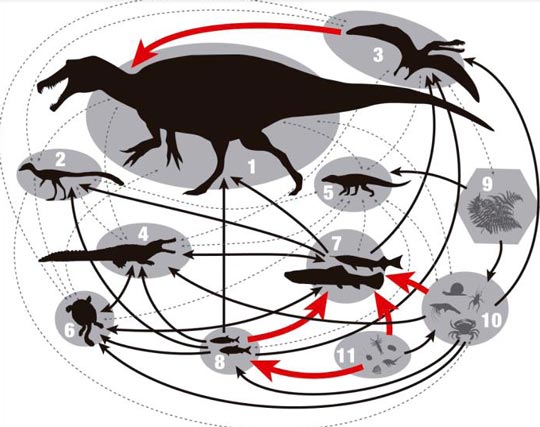Dinosaur Food Webs
Team members at Everything Dinosaur help school pupils to understand prehistoric animal food webs.
The national curriculum of England science programme outlines the fundamental topics to be taught to various age groups to provide a broad foundation for future scientific study. Key elements include providing a basis for making sense of our planet (understanding our world) and developing the rational required to examine problems, look for evidence and to test via experimentation (scientific working).
In Key Stage 1, children are expected to be able to distinguish between carnivores, herbivores and omnivores. In addition, they will be expected to identify that most living things live in habitats to which they are suited and describe how different habitats provide for the basic needs of different kinds of animals and plants, and how they depend on each other.
Prehistoric Animal Food Webs
A term topic on dinosaurs helps to reinforce and support this learning. At Everything Dinosaur, we have been asked to provide simple food webs to help get some of these fundamental points about ecosystems across. After all, for most children, learning about what Tyrannosaurus rex ate can enthuse even the most reluctant biologist.
A Simplified Dinosaur Themed Food Web

Picture credit: Cretaceous Research
Basic Food Chain Principles
Children in Year 2 for example, will be required to explain how animals obtain their food from plants and other animals, using the idea of a simple food web. They will be expected to identify and name different sources of food.
Food chains show the feeding relationships between animals, plants and other organisms. Whether it is examining the biota of the Upper Cretaceous Hell Creek Formation of Montana, the Savannah of Africa or the school pond, the principles regarding food webs still apply. Food chains tend to be roughly triangular in shape with the greater amount of biomass to be found at the lower levels. The amount of material and energy decreases from one level to the next. Food production is much more efficient if the food chain is short.
Energy is transferred along food chains from one level to the next. Not all of the energy available to organisms at one level can be absorbed by organisms at the next level up. Arrows tend to show the direction of energy flows in a food chain. At the base of most food chains is the sun, as it is sunlight that plays a role in photosynthesis, allowing plants to grow.
Visit the Everything Dinosaur website: Everything Dinosaur.

